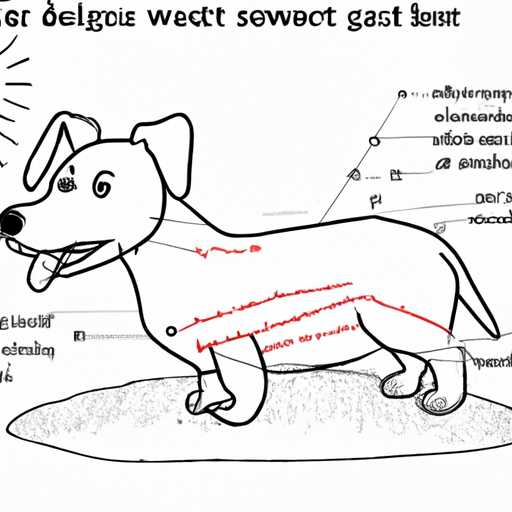As a caregiver, understanding your dog’s physiological processes is imperative. One such mechanism that often elicits curiosity is the way dogs manage to cool off, or more specifically, how they sweat.
Understanding Your Dog’s Sweat Mechanism
Unlike humans, dogs don’t sweat across their entire body. Their primary method of cooling down isn’t through sweating but panting. Yet, this doesn’t mean dogs don’t sweat at all. They do, just in a different way.
Dogs sweat through their paws. You might have noticed damp paw prints on a hot day or after a vigorous play session. This is your dog’s sweat mechanism at work. The reason behind this is the unique structure of a dog’s skin. Dogs have sweat glands located in their paw pads, known as ‘merocrine glands’, which function similarly to human sweat glands.
Physiological Differences: Dogs vs. Humans
While humans have sweat glands spread throughout the skin, dogs have a different setup. Here’s a simple comparison:
| Human | Dog |
|---|---|
| Sweat glands all over skin | Sweat glands only in paw pads |
| Sweating is primary cooling method | Panting is primary cooling method |
| Sweat is mostly water and salt | Sweat is mostly pheromones |
These differences are significant because they determine how dogs handle heat and exertion. Without the ability to sweat like humans do, dogs are more prone to overheating.
Recognizing Signs of Overheating in Dogs
As a caregiver, it’s crucial to recognize when your dog might be overheating. Here are some signs to look out for:
- Excessive panting or difficulty breathing
- Dehydration, which can manifest as dry or pale gums
- Increased heart rate
- Weakness or collapsing
- Seizures
Preventing Overheating: What You Can Do
Fortunately, there are steps you can take to ensure your dog stays cool and safe:
- Provide plenty of fresh, cool water.
- Avoid vigorous exercise during the hottest parts of the day.
- Provide access to shade or air conditioning.
- Consider cooling mats or doggie pools for outdoor dogs.
- Never leave your dog in a parked car, even with the windows open.
FAQs
Q: Can dogs sweat through their tongue?
A: No, dogs do not sweat through their tongues. They pant to evaporate moisture from their tongues, which helps cool them down.
Q: Why do dogs pant?
A: Dogs pant to dissipate heat and cool down. Panting allows moisture to evaporate from their lungs, tongue, and mouth.
Q: Are certain dog breeds more prone to overheating?
A: Yes, brachycephalic breeds like Bulldogs and Pugs, as well as heavily coated breeds, are more prone to overheating.
Q: How can I tell if my dog is dehydrated?
A: Signs of dehydration can include dry or pale gums, increased heart rate, and lethargy. If in doubt, consult your vet.
Understanding how your dog sweats and recognizing signs of overheating can make a significant difference in their health and happiness. Always remember, when the temperatures rise, ensure your canine companion has a cool place to relax and plenty of water to drink.



